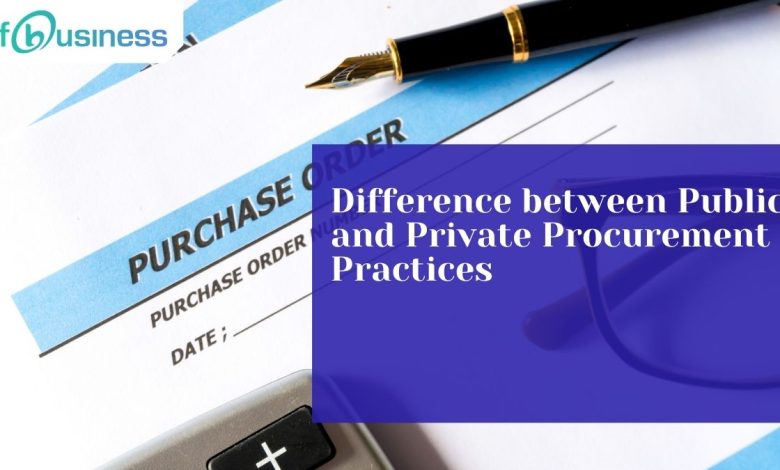Difference between Public and Private Procurement Practices

Raw material procurement frames the supply chain strategy of every business with a need to purchase goods and/or services. The private sector comprises privately run organizations, and the public sector incorporates organizations owned by the government at the national, state, or local level. Although private and public organizations have some procurement similarities, the differences often stand out.
The procurement process for the public and private sectors is broadly the same. Many of the differences between public and private procurement lie in the different methods of funding. Private companies can effortlessly transfer money from one department to another if business conditions end up changing. If prices increase, or another supplier reduces prices, public organisations face a much longer process to change their budgets. There are differences in how they are funded and regulated, which affect the procurement process.
#1: Funding
Public sector is mainly funded through taxes and government departments. Different organisations can also raise revenue commercially. Private sector organisations are financed using private money, through investors, shareholders or loans, and other forms of finance. They can move money around their organisations reasonably quickly in response to changing economic conditions or business requirements. Public sector organisations don’t have the same flexibility when it comes to amending their budgets.
On the other hand, cuts or delays in Government funding can happen quickly. Public sector organisations are then left with a budget shortfall for procurement teams to address, putting pressure on them and services the organisation is providing. Raw material procurement is often suspended, leading to supply issues and impacting relationships with suppliers. When private sector organisations face financial difficulties, they have access to more funding options than the public sector and can often quickly replace any shortfall.
#2: Regulation
Another of the differences between public and private sector procurement is how they are regulated. The public sector is subject to more rigorous scrutiny, and organisations are constrained by different legislation than the private sector. Public sector organisations can be subject to both the UK and international regulations, some of which are considered inflexible and hinder public procurement processes. Private sector organisations are also subject to legal regulations and scrutiny by shareholders.
However, they are generally less onerous and don’t impact procurement in the same way. Because of the regulatory regime, and requirements that they must account for their spending, public sector procurement is more procedurally heavy. Often you’ll find the procurement process is slowed down by their processes and procedures.
#3: Stakeholders
Private organisation’s stakeholders are much smaller in number than those in the public sector. Stakeholders include owners, investors, shareholders, and customers. Interests are limited to the product and services or financial performance. Public sector stakeholders include everyone who is financing or using the services the public sector is providing, effectively the general public. The public sector is under far greater scrutiny than the private sector.
#4: Focus
For public organisations, the focus for raw material procurement is on reducing spend and saving money. They need to ensure they remain compliant with regulations and must share information with other organisations in the industry to help them save money too. Private organisations are profit focused and continuously try to increase profit margins. Sharing procurement information would give a competitive advantage to competitors and so would never be done.
Also Read:- 5 Cost-cutting Strategies that could cause you to Spend More






